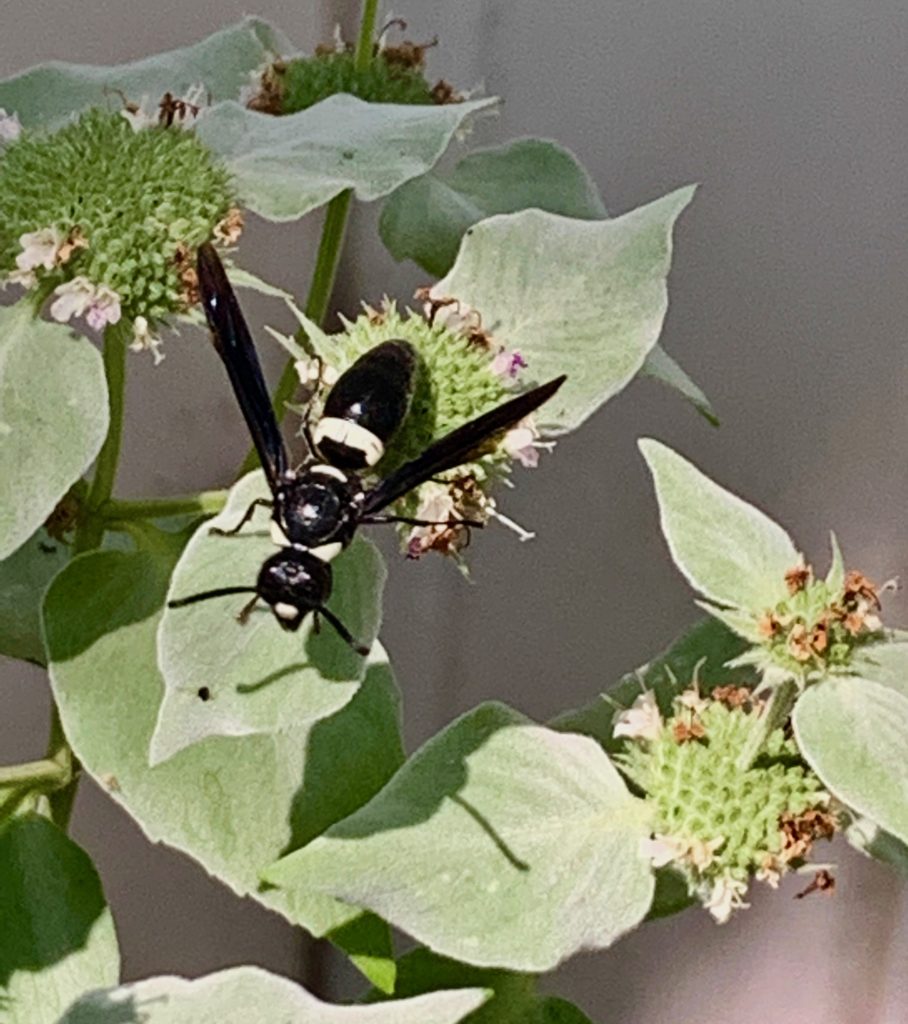
by Mary Reid Barrow
On hot sunny days, insects zoom back and forth over mountain mint at the Virginia Beach Middle School Butterfly Garden.
Bees, wasps and flies stop for a sip of nectar, then dart hither and yon so fast, you can barely comprehend what you are seeing.
It takes time to acclimate your eyes and your senses before you can figure it out. You might even pass the action by if you don’t pause and watch the mountain mint carefully.
You can easily visit the garden by just walking behind the school or along the bike path also at the rear of the school. But you also can get a sense of what insects think of mountain mint by looking at this video from the garden on a hot recent morning:
You never see this kind of action in an ordinary garden. Calling it a butterfly garden is a misnomer too, though there are plenty of butterflies to be seen. This a real garden, like gardens used to be before we began importing plants from all over the world.
No doubt about it, mountain mint is a special favorite of insects, but the garden is full of native plants making busy insects happy from spring to fall.
Introduce yourself to mountain mint and you will be hooked on natives.
You might say you don’t want insects in your garden because they sting.
For the most part, they don’t sting. Insects are happy when they are eating. They only get angry when you disturb their homes or nurseries.
But, you might say, mountain mint is not colorful. Maybe not in the rainbow sense, however it is the prettiest, most serene shade of light gray-green to ever light up a garden.
And though mountain mint doesn’t smell as sweet as a rose, it does smell like mint.
Dozens of tiny green flowers bloom, like a gentle rolling wave, across the top of mountain mint. Its genus name, Pycnanthemum, comes from the Greek for dense and flower to describe these blooms.
There are several varieties, but what you see around here is mostly short-toothed mountain mint, Pycnanthemum muticum.
Mountain mint and other natives provide the fast food nectar restaurant for adult insects. Other natives might provide just the right leaves that are the perfect food for picky caterpillars, nature-made to eat only one species of plant.
Native plants make the world go round, ensuring we have the insects we need to pollinate our fruits and vegetables and the trees and plants that live around us and to serve as the food that birds and other animals need to survive.
Get a glimpse of how it works and pay a visit to the Butterfly Garden behind Virginia Beach Middle School.
Do you have a favorite tree or plant with a story to tell? What relationships have you observed between plants and critters? Who eats whom? Who has babies where? Send an email to maryreid@lrnow.org